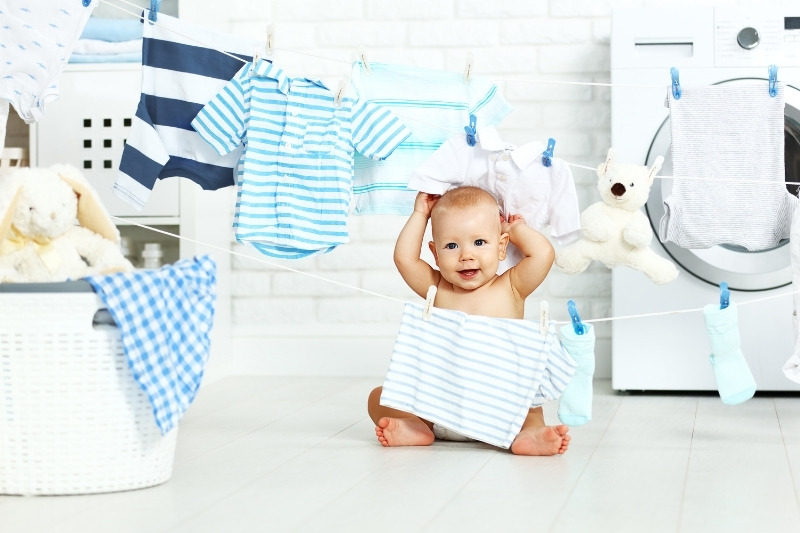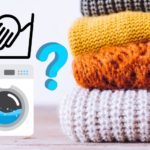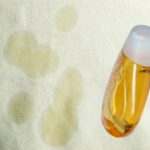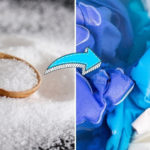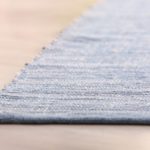As you might know already, it’s messy work taking care of a baby!
Babies love to feed their clothes, vomit their dinner back over their trousers, and they like nothing more than to leave you an explosive gift three to five times a day! This typically results in multiple outfit changes throughout the day.
In fact, you can consider yourself a very lucky individual if you don’t have to change your baby’s clothes two or three times a day, because it becomes the norm for most.
And while it’s not difficult to change outfits throughout the day, the amount of washing you have to do by the end of the week can be crazy!
Just keeping on top of this washing takes a lot of effort, and that’s not taking into consideration all the other stuff you’ve got to do too.
So, how do you take the edge off washing baby clothes? Easy! Keep on reading to find out how to wash baby clothes below.
Step-By-Step Guide to Washing Baby Clothes
When you’ve got a baby at home, you’ll quickly come to realise that your average sized laundry pile will become overrun with baby clothes! Literally, the turnaround on clothes will seem never ending.
Dirty tops will be coming at you from every angle, a mountain of soiled nappies will be threatening eruption, and you’ll have lovely set-in stains to treat on a daily basis.
And as there’s no way out of this laundry mayhem for you, you’ll just have to deal with it as best as you can. So, this is the easiest way to wash your baby’s clothes.
Step 1: Separate your baby’s clothes
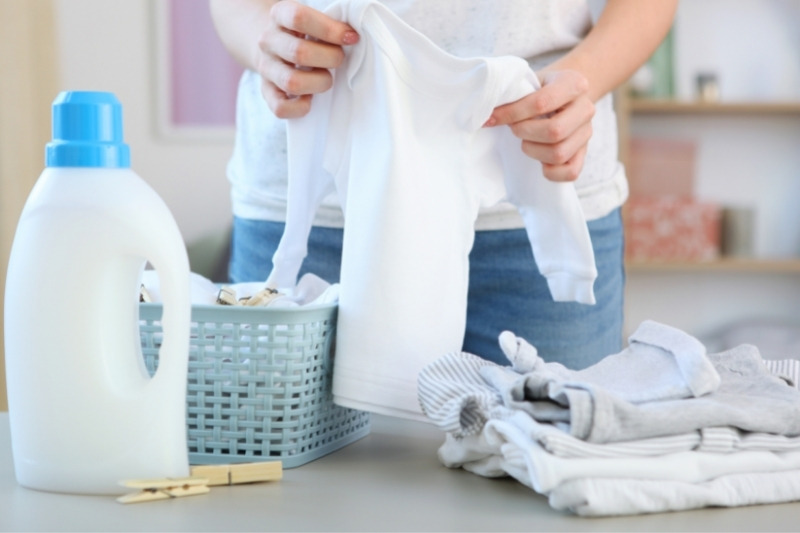
You will need to separate your clothes from your baby’s clothes first. And although some parents stick their own washing in with their baby’s, it’s not always recommended.
In short, baby clothes are very delicate and when they rub against adult clothes, they can get damaged. Also, you don’t really want to mix the germs found on adult clothes with baby clothes, and vice versa.
Once you’ve done this, you should then separate your baby’s clothes from their nappies.
Of course, if you don’t use reusable nappies, you can skip this step. Reusable nappies, usually made from cloth, should be popped to one side and cleaned on their own.
After you’ve done this, you will need to separate your baby’s clothes by colour. You should have a pile of coloured clothes and white clothes.
You should also keep clothes of similar material together—a collection of cottons, for example.
Tip: When buying baby clothes, try to purchase clothes that are similar in colour, because this can often speed up the cleaning process for you.
In addition to this, buying clothes that are of the same material will also aid the cleaning process, because you won’t have to make smaller separate washes for different materials.
Step 2: Check the labels on the baby clothes
It’s essential that you read over each item’s label before you proceed to wash the item of clothing. There may be some valuable information on the tag that tells you how the item should be washed.
Not sure what each symbol means? Read our UK laundry symbols’ guide.
Remember to stick to what the tag says.
Step 3: Remove and treat soiled clothes
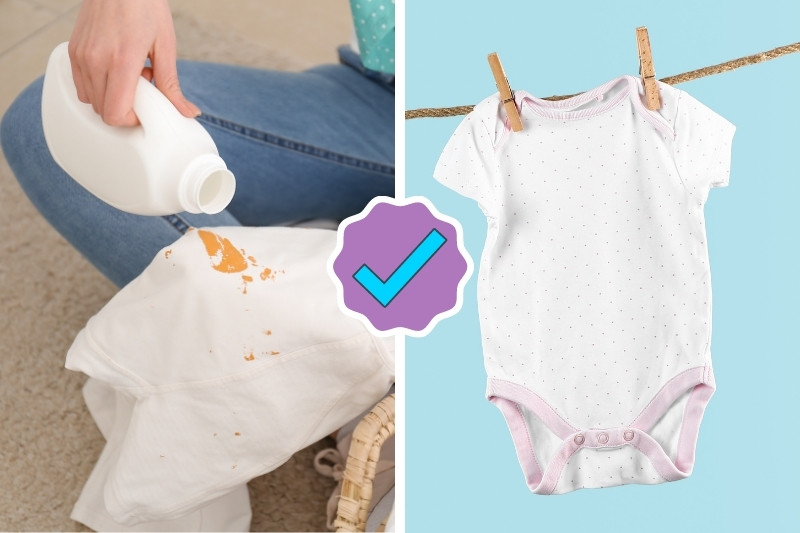
It’s likely that a lot of your baby’s clothes will be heavily soiled, and will need to be pre-treated before they are washed.
Sick, poo and milk are all major culprits when it comes to marks on clothes, and they must be removed correctly, otherwise they will damage the items even more, or make the clothing unhygienic.
And while the stains are unsightly, you can typically remove them by dampening the area and treating them with a non-biological detergent before an actual wash takes place.
Pre-treatments are usually fairly easy and quick to complete, so they won’t add much time to your washing schedule.
If you use reusable nappies, it’s at this stage that you should treat and clean out your baby’s nappies.
You will need to remove and clear out the nappy liner from the cloth nappy, leaving the liner in will spread faeces all over your washing machine. So, don’t forget this step!
And you will need to leave the nappy soak in a water and detergent mix overnight, perhaps longer, but this depends on the stain.
If you need some tips on removing stains from baby clothes, we’ve written a guide on that here.
Step 4: Fasten up
Before popping the clothes in the washing machine, you should make sure that all poppers are done up. This will prevent the clothing from flapping around and getting tangled up in the wash.
It also means that you limit the amount of potential snagging that could happen too.
Step 5: Washing baby clothes in a washing machine
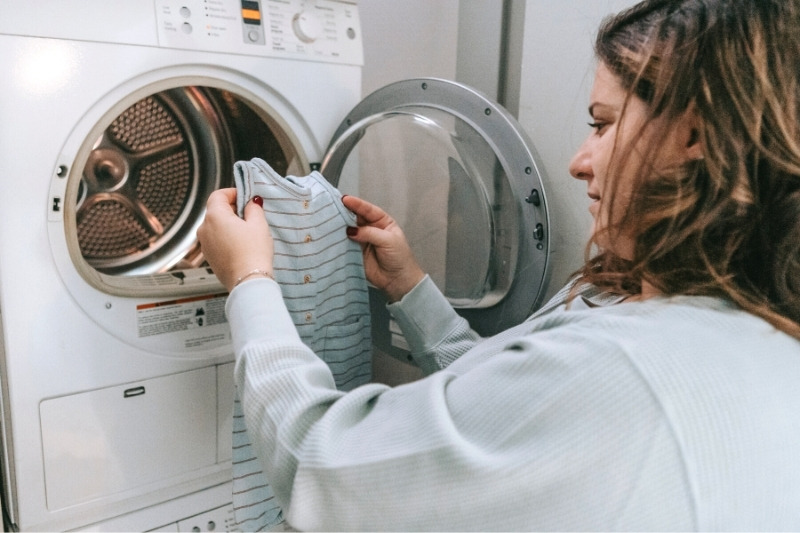
Once you’ve treated your stained baby clothes, you can pop your individual piles of laundry into the washing machine. You should, for example, have a pile of coloured clothes, a pile of white clothes, and a pile of reusable nappies.
You will need to pick a gentle cycle, and a temperature between 30℃ and 40℃ to wash your baby’s clothes on.
You don’t need to choose a high temperature for baby clothes because the non-bio detergent should be able to tackle the dirty laundry at 30 or 40℃. A hotter wash will just cost you more money and be less environmentally friendly, and is more likely to damage the clothes.
You will, however, need to choose a higher temperature of 60℃ when washing reusable nappies. There’s a whole load of dirt and bacteria in nappies, so they need to be washed alone and at a hotter temperature.
Step 6: Add your detergent
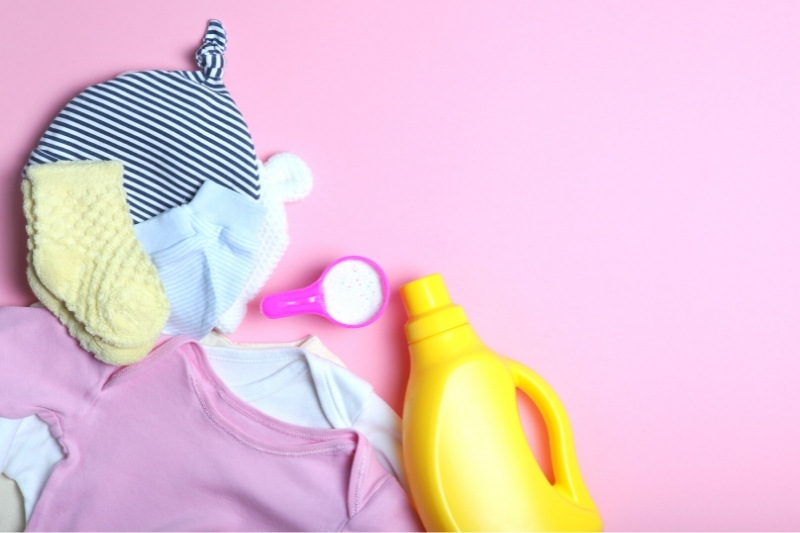
You will need to add a non-biological detergent to the washing machine when washing your baby’s clothes. Non-bio is the best option to go for because biological detergents contain enzymes that can often irritate a baby’s skin.
See our guide to the best washing powders for baby clothes if you need some product recommendations.
While on the topic of detergent, a fragrance-free or less fragrant detergent is often better for baby clothes. And ideally, you don’t want to choose a detergent that is overly fancy, for example, something with extra strong colour lock in qualities!
Tip: You can also hand wash a baby’s clothes. Just fill a tub with warm water and non-bio detergent, and start hand cleaning the laundry. Remember to rinse the baby clothes off a few times to get rid of excess detergent, and lay them flat out on a surface to dry.
Step 7: Drying baby clothes
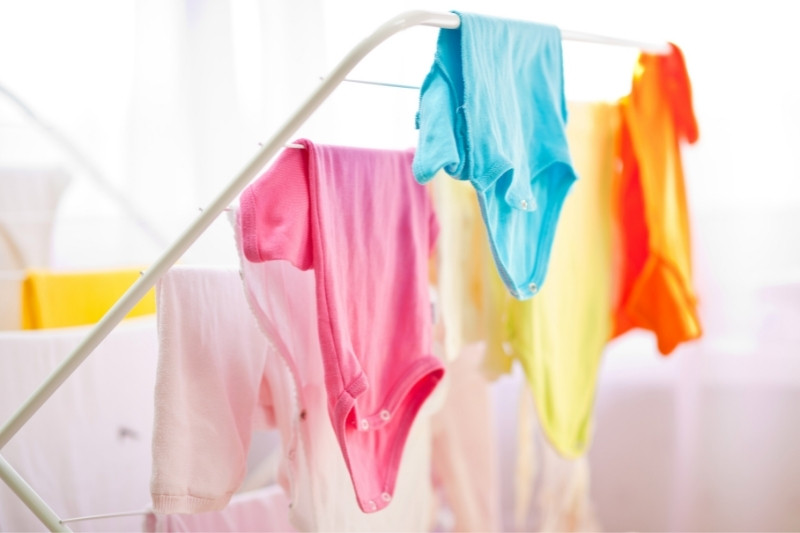
Once the washing cycle has ended you can move on to drying the laundry.
As long as you’ve read the clothing’s label and it says ‘tumble dryer friendly’, you can dry the laundry in a tumble dryer. You should, of course, choose a gentle cycle and a low heat for the job.
Additionally, you could just line dry the clothes too.
What Temperature Should Baby Clothes Be Washed At?
Regular baby clothes (not nappies), should be washed at 30 or 40 degrees Celsius. While it might be tempting to use a high temperature to kill any bacteria from vomit and poo, a gentle wash at 30 or 40℃ is enough to clean baby clothes.
Using a higher temperature risks damaging the fabric, and will cost you more money in electricity bills.
Nappies should be washed separately at a hotter temperature of 60℃ in order to kill bacteria.
Can Baby Clothes Be Washed in a Washing Machine?
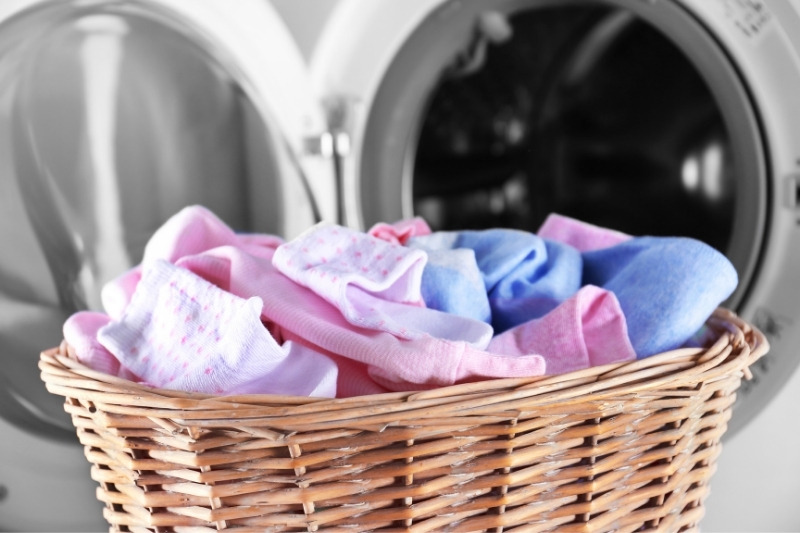
Yes, baby clothes can be washed in a washing machine. Just be sure to pick a gentle setting, a low temperature, and check the clothes’ tags before you continue with the washing machine method.
A lot of parents utilise this method because it is so convenient!
Do You Have to Pre-Wash Brand New Baby Clothes?
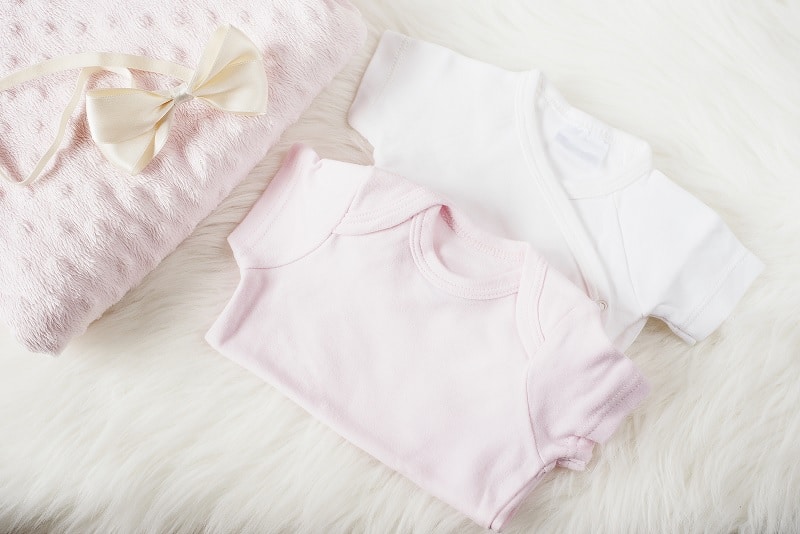
Yes, you should always wash any kind of new baby clothing. It ensures that clothing is hygienic, which is incredibly important!
You never really know where clothes have been before they get to a shop, and then into your house. So, why take the risk – just clean the clothes before your baby wears them.
Do You Have to Buy A Special Baby Detergent To Wash Baby Clothes?
No, you don’t have to buy a specialised baby detergent to wash baby clothes. A non-biological detergent will do the trick.
However, if your baby has sensitive skin or you’ve been advised by a GP to use a specific detergent, it is better to listen to this advice and to use a specialised product to clean the laundry.
Should You Use Fabric Softener When Cleaning Baby Clothes?
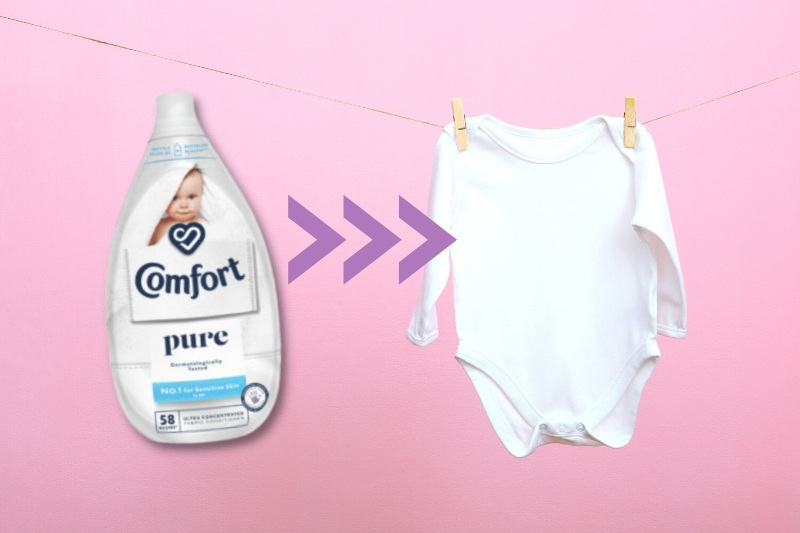
It’s not essential to use a fabric softener when cleaning baby clothes. And a lot of families don’t bother using softener until their kids are much older.
However, if you find that clothes get a bit rougher after being washed many times, you can add a small amount of sensitive fabric softener to your laundry.
In this case, you should purchase a sensitive skin fabric softener that has been tested, and has been given a stamp of approval from the British Skin Foundation.
Something like Comfort Pure, which has been dermatologically tested and is hypoallergenic, would do the job.
Although, you should always avoid using any kind of fabric softener on nappies. This can cause irritation and it really wouldn’t be very pleasant for your baby.
Can You Dry Baby Clothes in a Tumble Dryer?
Yes, but always check the clothing label to make sure. And only use a gentle cycle and a low heat if the tag says it’s okay to tumble dry the items.
And remember to always treat stains before drying laundry because heat helps to set stains. This, in turn, makes them harder to remove.
Air drying is also encouraged as the sun is a natural bleaching agent and helps to remove toughened stains.
Can You Use Laundry Bags When Cleaning Baby Clothes?
Laundry bags are ideal companions to have around when washing baby clothes. You can safely pack a few items into a bag, and you can rest knowing that no items will go missing mid wash!
Plus, it’s so much tidier to unload a washing machine of tiny clothes when everything is packed up nicely. So, yes, use laundry bags if it makes the job easier for you.
Can You Clean Baby Clothes Together with Adult Clothes?
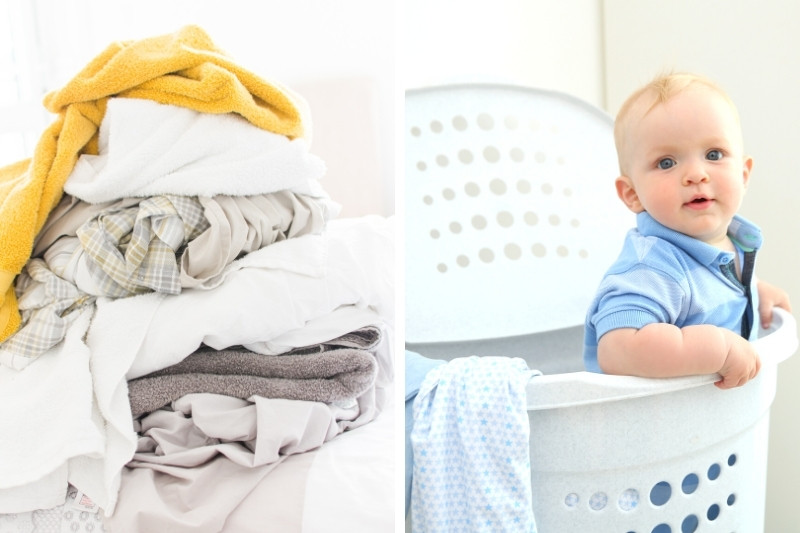
It is better for the materials involved and for hygiene reasons to do separate baby and adult clothes washes. It also prevents cross-contamination between clothes too.
For example, if someone in the house works in a dirty or chemical environment, you risk transporting these germs onto a baby’s clothes, if you wash everything all at once. It could also cause complications if the baby has sensitive skin.
That being said, a lot of parents throw all of their household’s clothes into one wash because it saves time and is cheaper.
Of course, if you’re going to do this you should still pick a gentle wash and a non-biological detergent for the job. It would also be a good idea to use laundry bags to help keep everyone’s laundry organised and under control.
And you should certainly do a separate nappy wash! You really don’t want to go mixing clothes with a faeces-riddled nappy, even if it looks relatively clean inside!
How Can You Speed Up the Washing Process?
You will inevitably have loads of clothes to clean when you have a baby, so you won’t be able to get away with not doing the laundry. However, there are things you can try that can help the cleaning process along:
- Buy clothes of similar materials, so they can be washed together – reduces the number of cycles you need to run.
- Purchase clothes that are similar in colour, so they can be washed together – reduces the number of cycles you need to run.
- Be organised with your laundry, have a rota if it helps!
- Utilise laundry bags wherever possible.
- Buy clothes that are easy to care for, make your life easier from the off – cotton is an excellent material to work with and it’ll be kind on your baby’s skin.

Bethan has a passion for exploring, reading, cooking and gardening! When she’s not creating culinary delights for her family, she’s concocting potions to keep her house clean!
